Complete Solutions to Level 2 of chapter HYDROCARBONS (ALKENES) of Class 11 book with complete answers and questions
| Class 11 | CHEMISTRY |
| Chapter | HYDROCARBONS (ALKENES) |
| MS CHOUHAN | Level 2 |
| Number Of Questions | 8 |
| Academic Year | 2023-24 |
Propene `(CH_(3)-CH=CH_(2))` can be transformed to compounds (a to j) listed in the left-hand column.
Write letter designating the reagent, you believe desired transformation. In the case of multi-step sequence write the reagent in the order they are to be used.
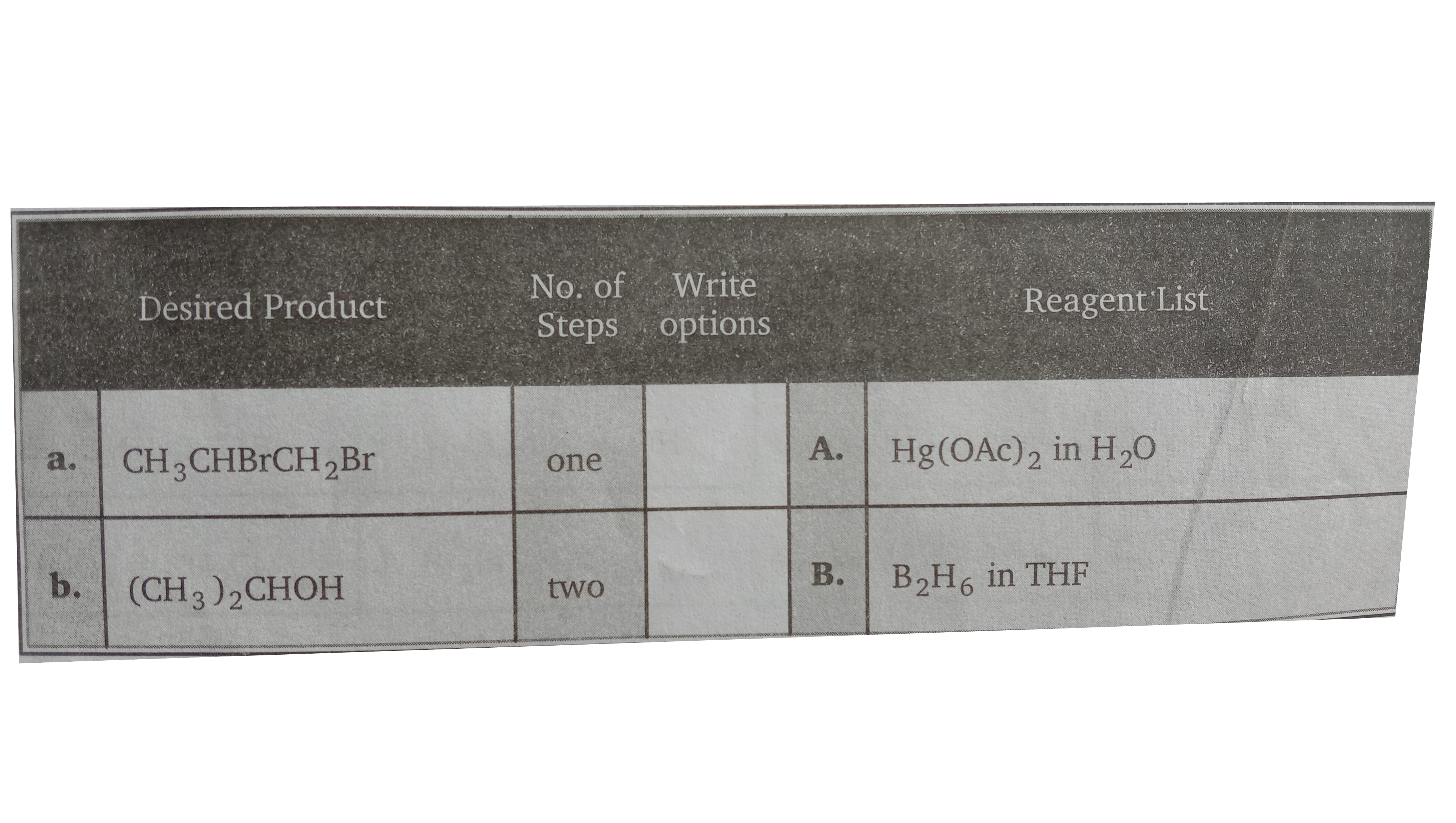
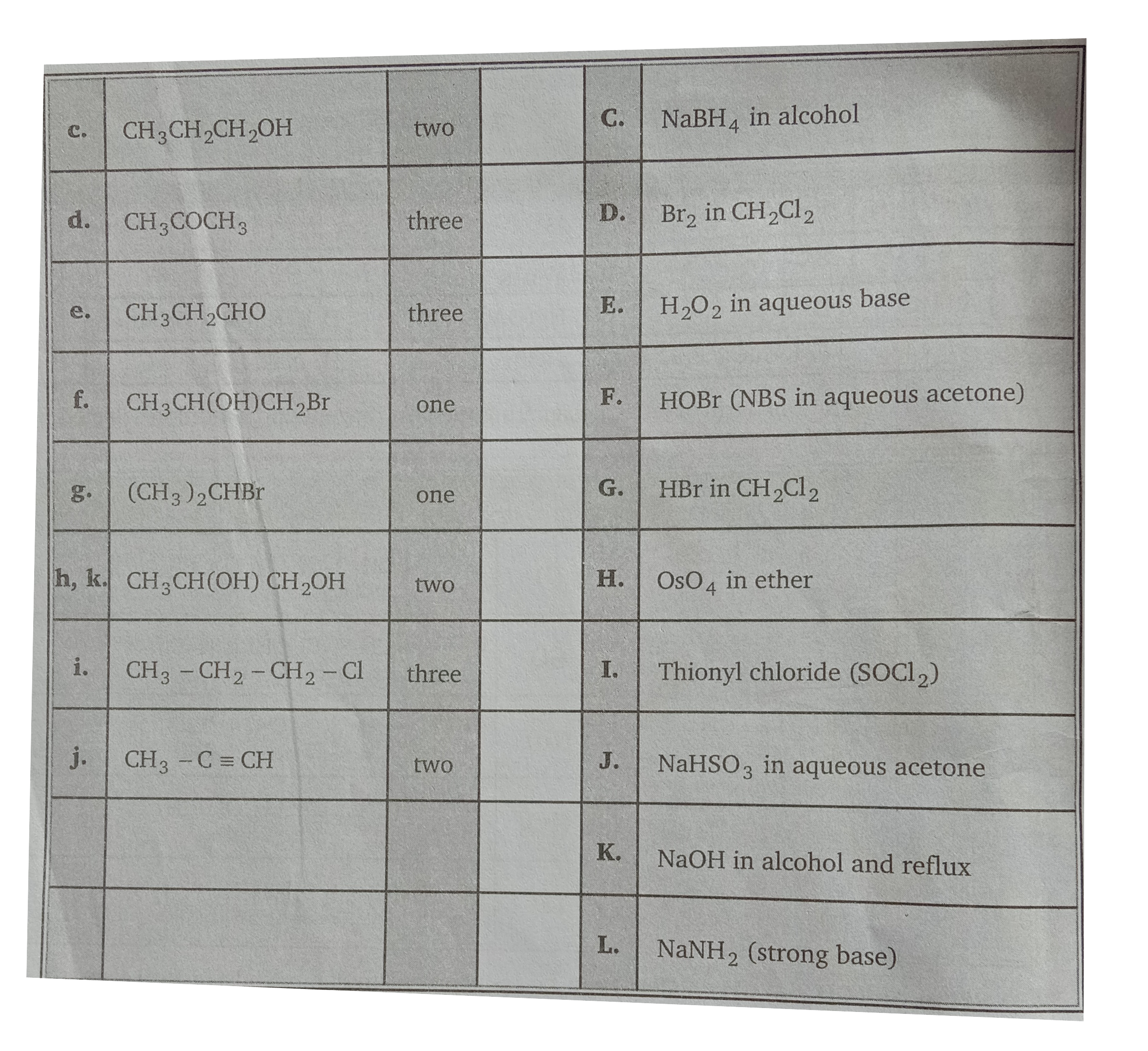
View SolutionIn each reaction box write a single letter designating the best reagent and condition selected from the list at bottom of the page.
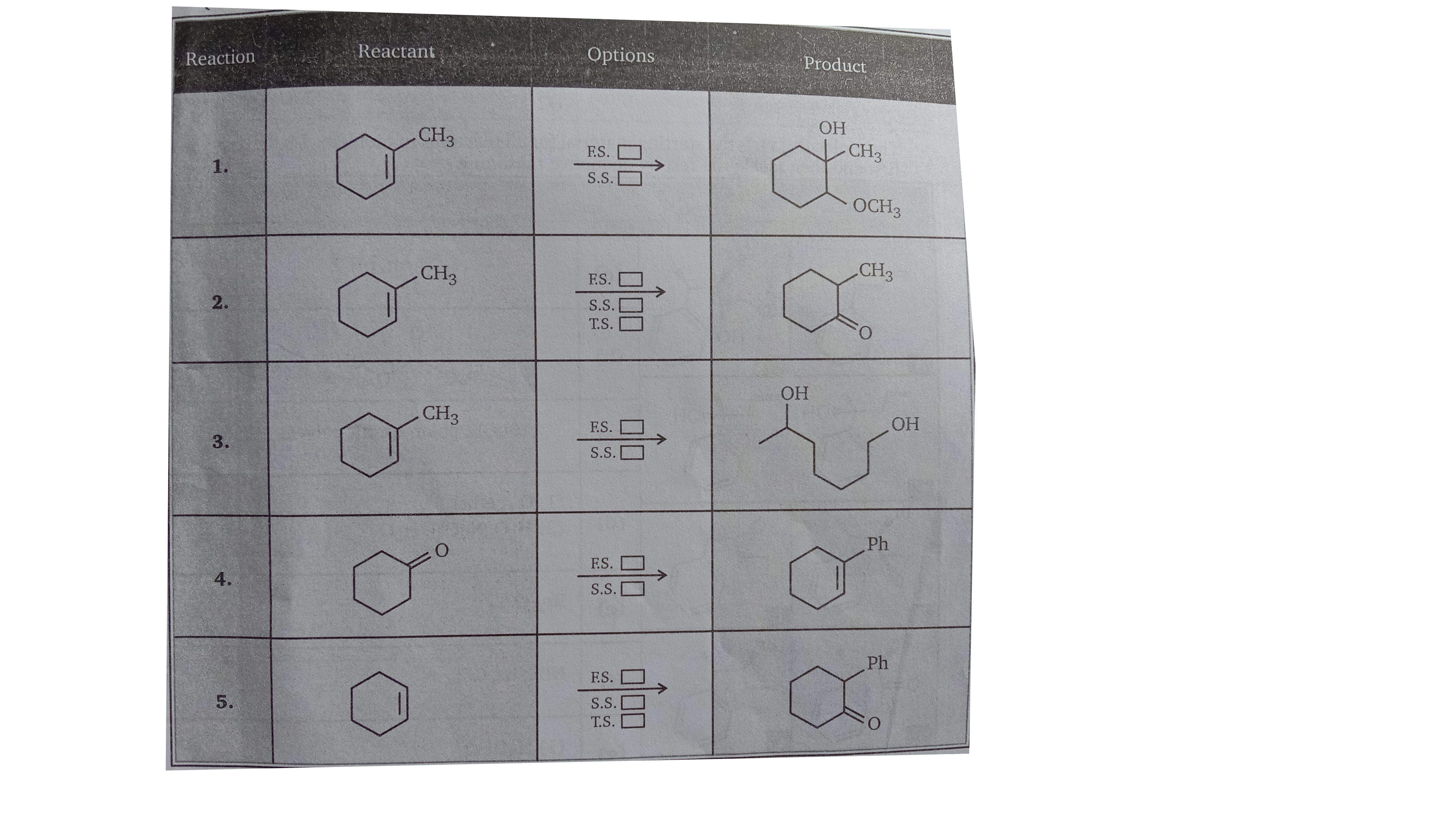

View SolutionMatch the reagents a-j with products A-J. There is one best product for each reaction.
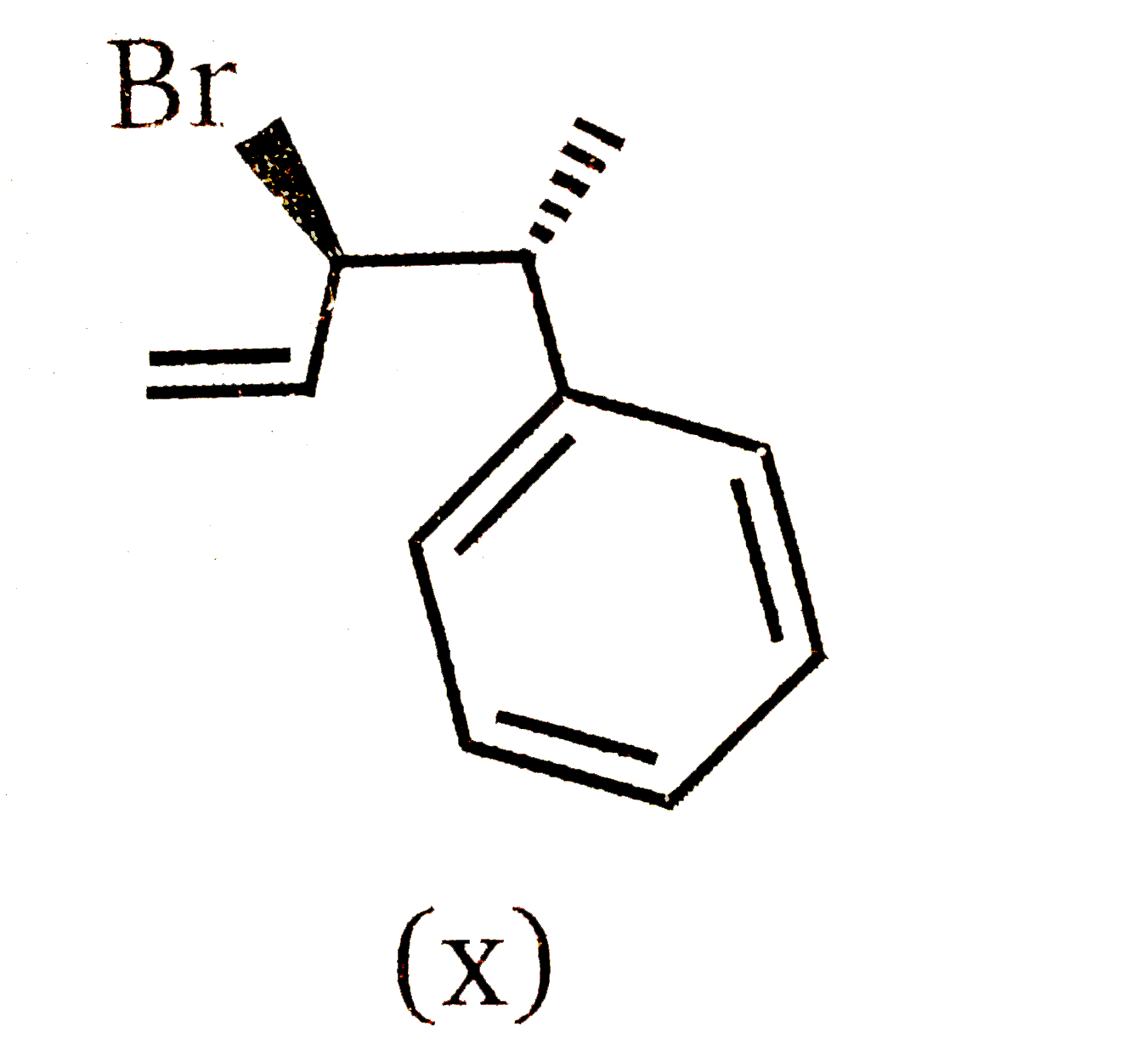
The molecule (x) is the starting material for all reactions in problem. Do the ones you know first and then tackle the rest by deductive reasoning
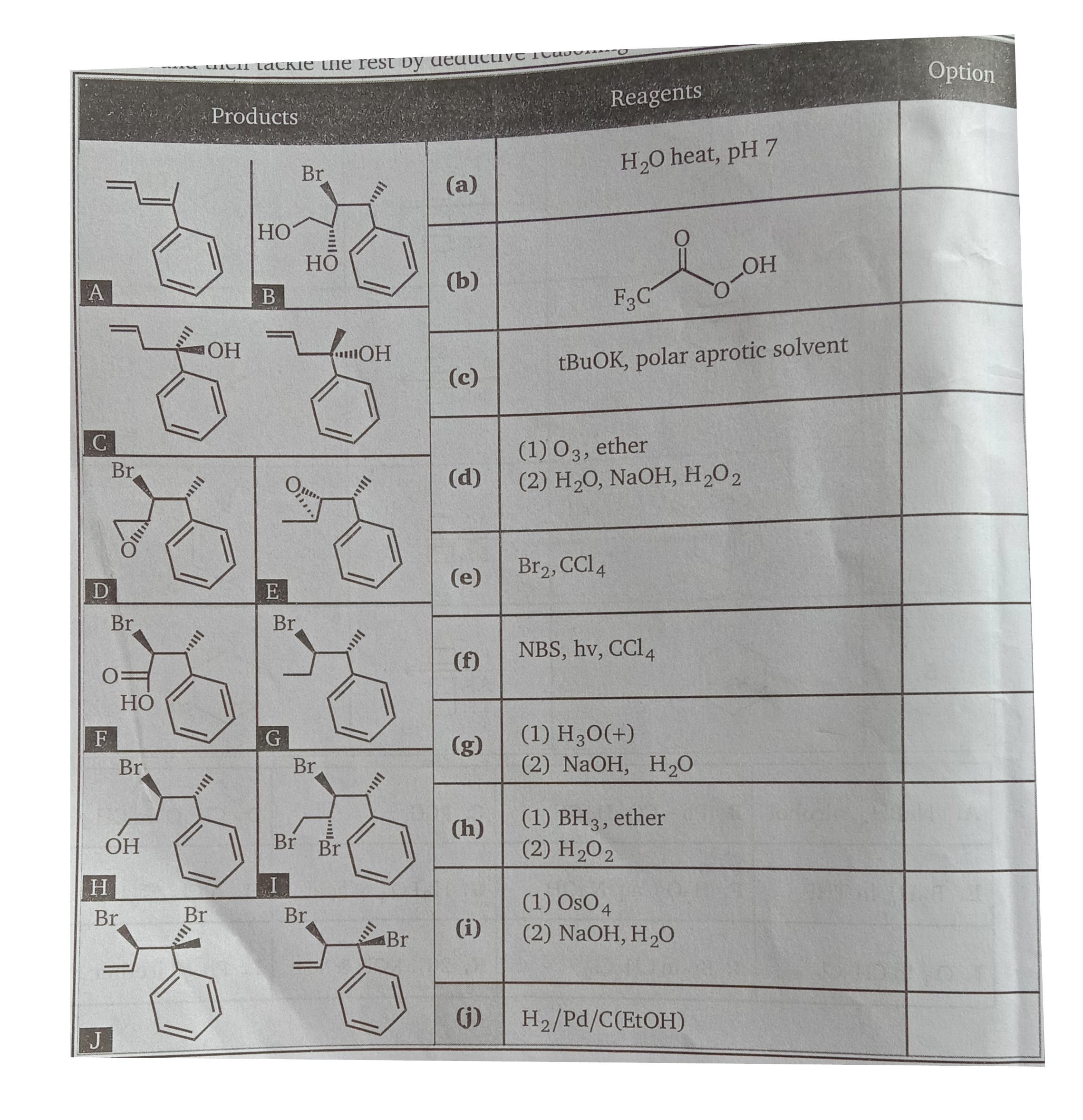
View SolutionMatch the column:
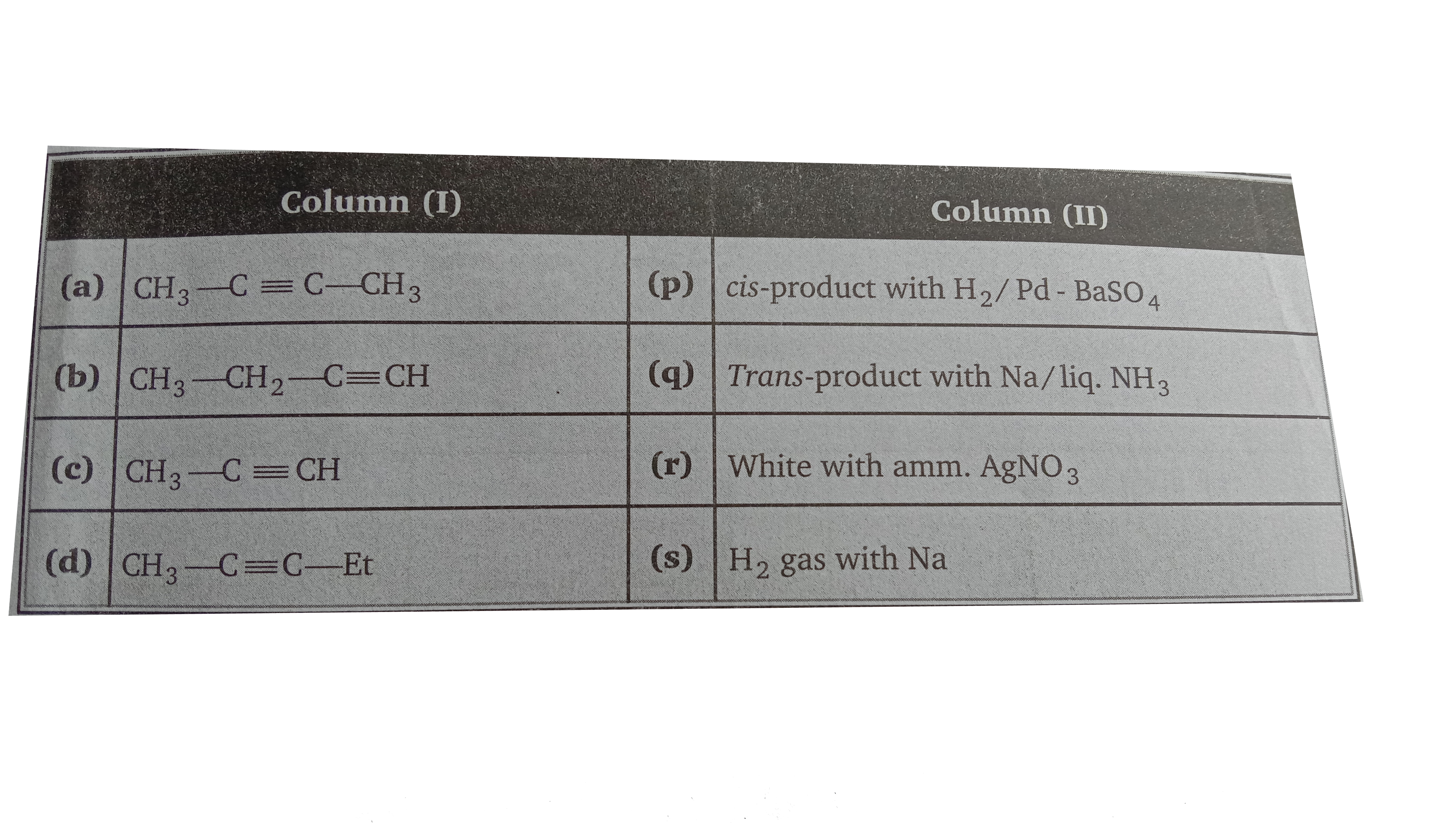
View SolutionVladimir Markovnikov rule:
Alkenes undergo electrophilic addition reactions. It is triggered by the acid acting as a electrophile toward `pi`-electrons of the double bond.
Markovnikov's rule states that when an unsymmetrically substituted alkene reacts with a hydrogen halide, the hydrogen atom adds to the carbon that has the greater number of hydrogen, e.g.,
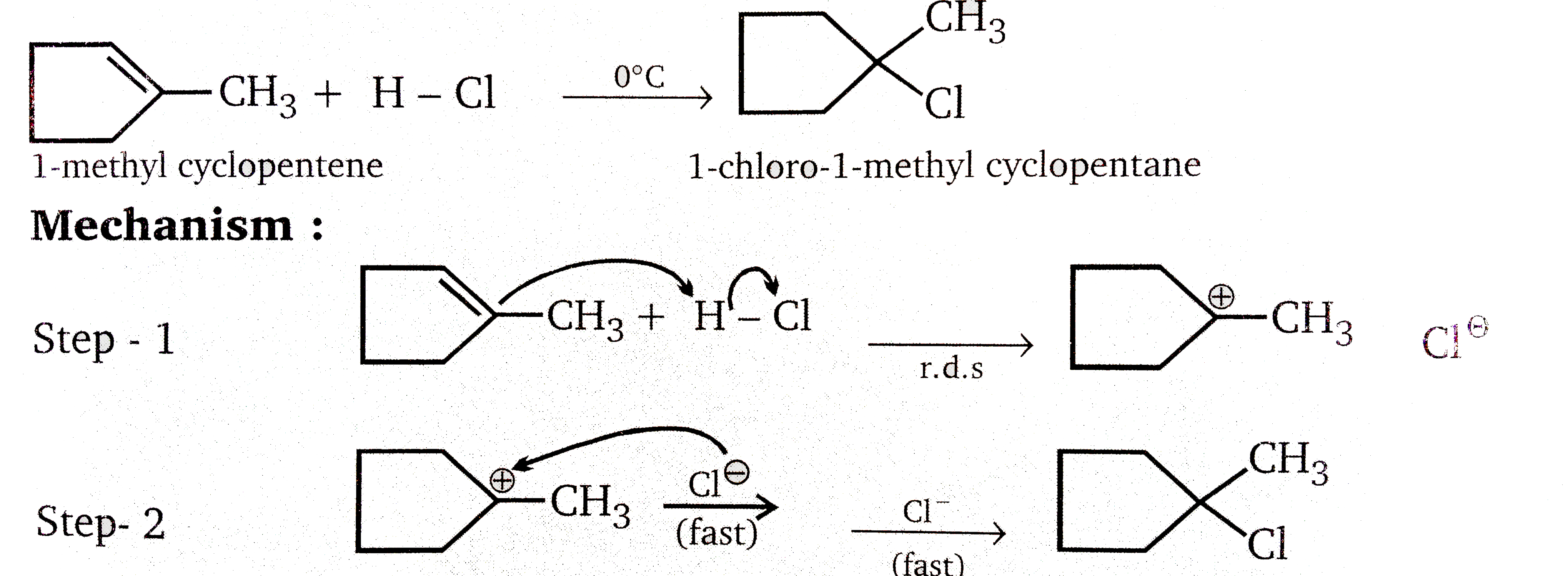
Identify the major products `r_(1), r_(2)` and `r_(3)` in the given reactions
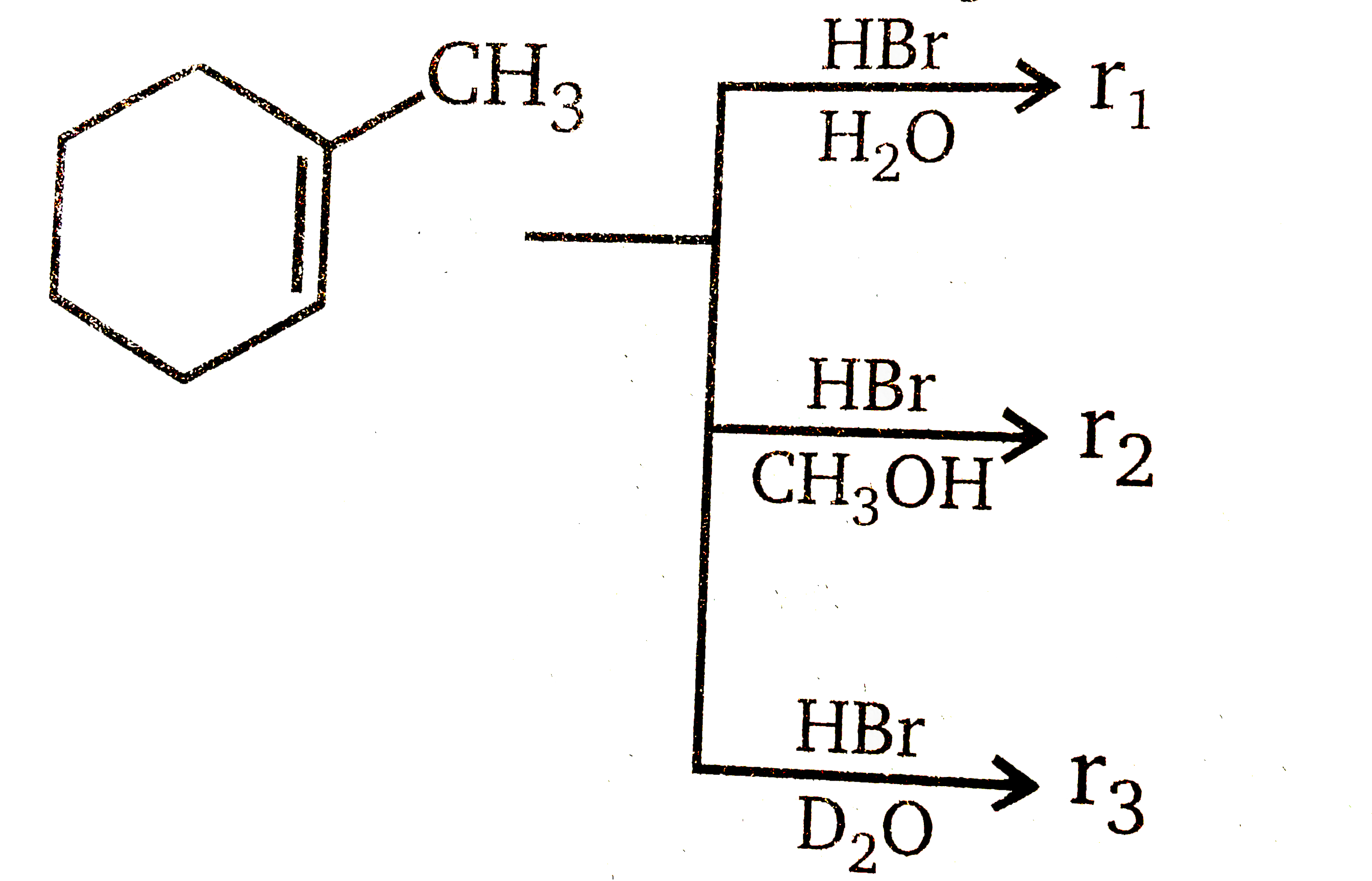
View SolutionVladimir Markovnikov rule:
Alkenes undergo electrophilic addition reactions. It is triggered by the acid acting as a electrophile toward `pi`-electrons of the double bond.
Markovnikov's rule states that when an unsymmetrically substituted alkene reacts with a hydrogen halide, the hydrogen atom adds to the carbon that has the greater number of hydrogen, e.g.,
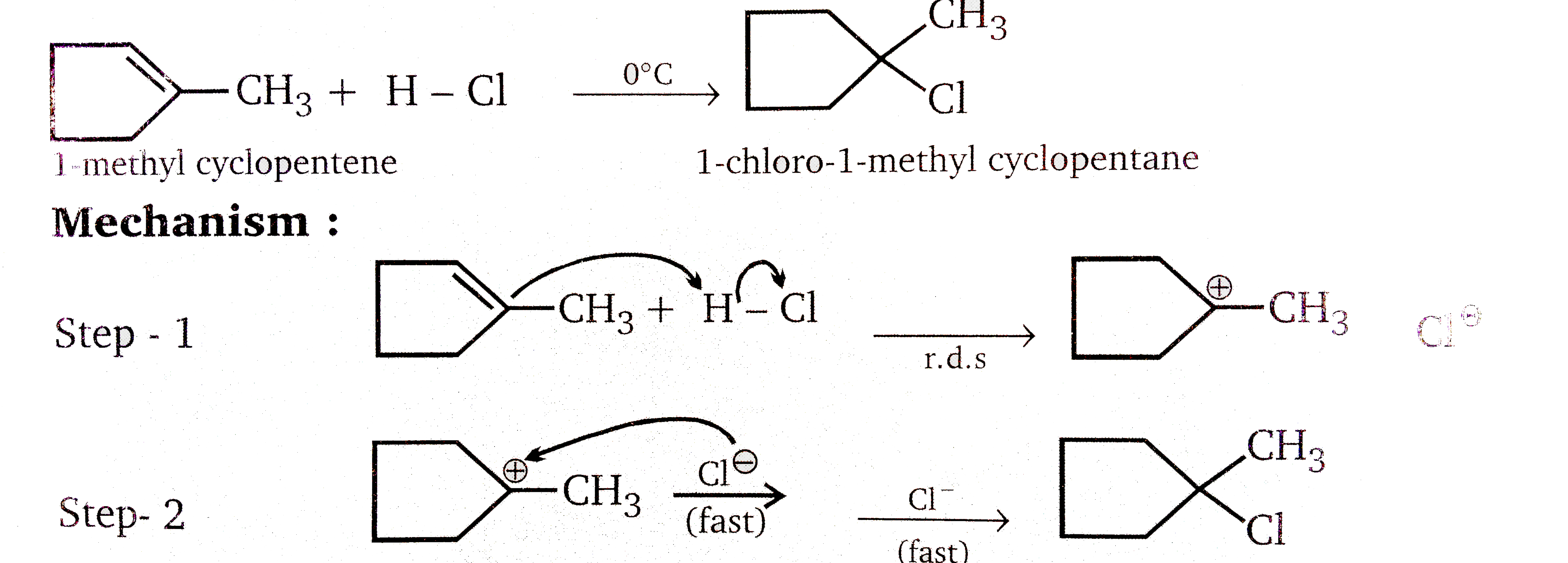 In which of the following reactions, product is racemic mixture?
In which of the following reactions, product is racemic mixture?
View SolutionVladimir Markovnikov rule:
Alkenes undergo electrophilic addition reactions. It is triggered by the acid acting as a electrophile toward `pi`-electrons of the double bond.
Markovnikov's rule states that when an unsymmetrically substituted alkene reacts with a hydrogen halide, the hydrogen atom adds to the carbon that has the greater number of hydrogen, e.g.,
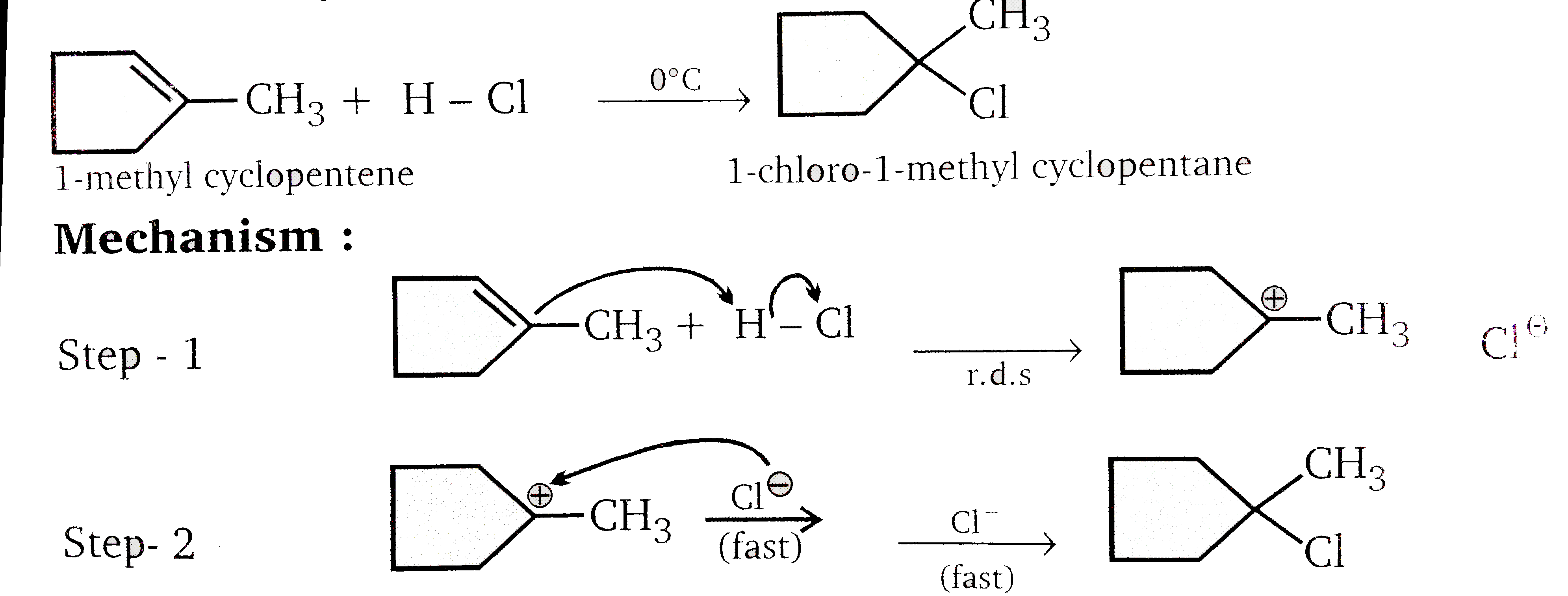 In which of the following reaction, diastereomers will be formed?
In which of the following reaction, diastereomers will be formed?
View SolutionMatch the column I and II:
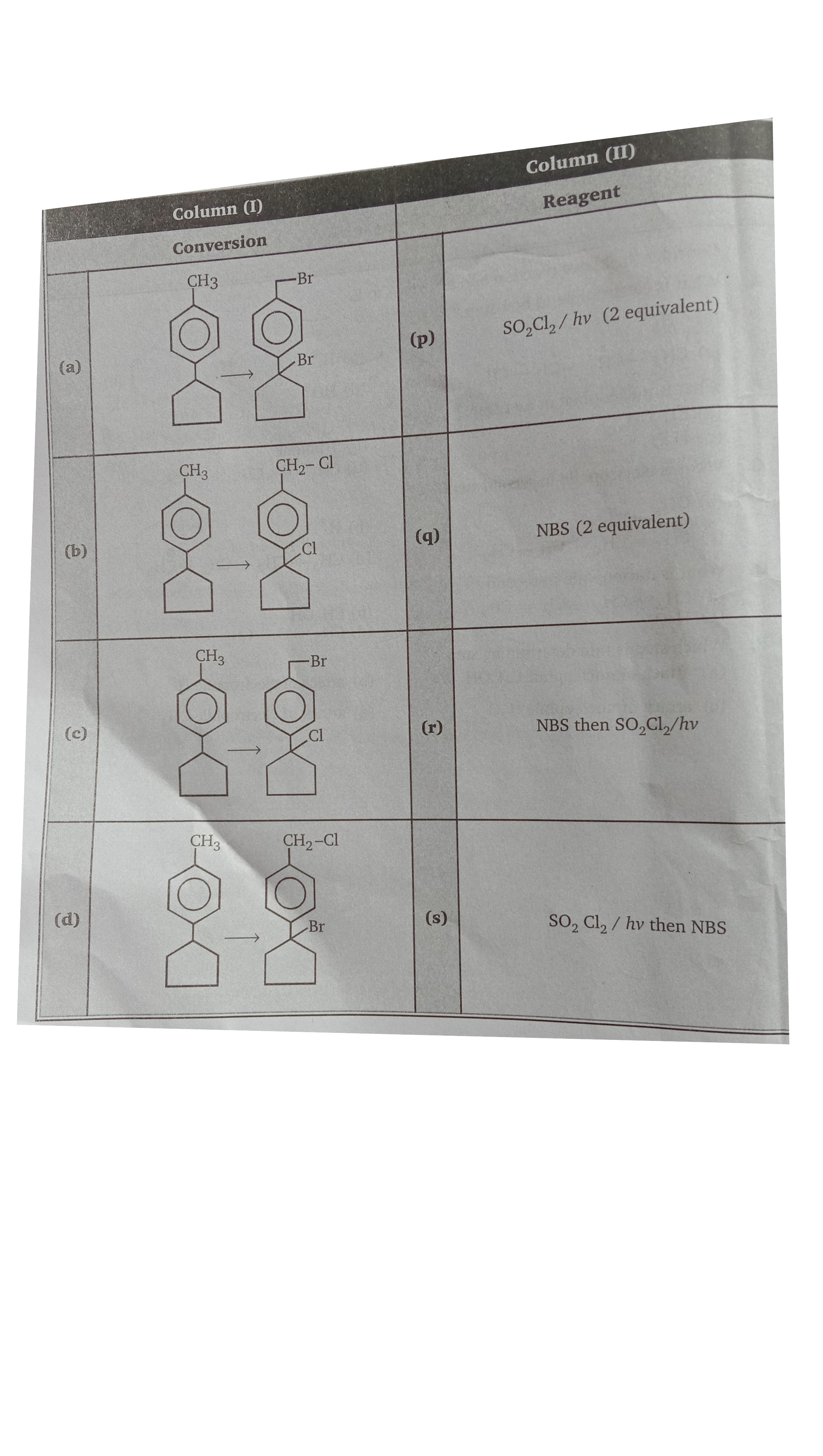
View Solution
Level 2 questions and complete solutions for chapter HYDROCARBONS (ALKENES) of MS CHOUHAN CHEMISTRY (HINGLISH) of Class 11